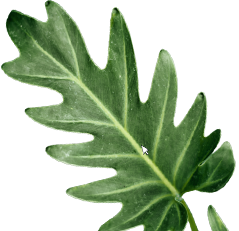Baltic Sea Map Europe
Baltic Sea Map Europe
If you’re looking for a unique and stunning destination to explore, then the Baltic Sea Map Europe is an excellent choice. From its breathtaking coastlines to its vibrant culture, there’s something for everyone to enjoy. Whether you’re interested in history, nature, or simply relaxing on the beach, this region has it all.
While the Baltic Sea Map Europe is undoubtedly a beautiful and fascinating place to visit, there are a few potential pain points to keep in mind. For example, the weather can be quite unpredictable, so it’s important to pack accordingly. Additionally, some areas may have limited infrastructure or language barriers, so it’s always a good idea to do your research ahead of time to make the most of your trip.
There are countless must-see attractions in the Baltic Sea Map Europe, but a few standouts include the charming town of Gdansk, Poland, the stunning beaches of Latvia’s Jurmala, and the breathtaking cliffs of Sweden’s Gotland Island. Visitors can also explore the region’s rich history and culture by visiting museums, castles, and historic sites throughout the area.
In summary, the Baltic Sea Map Europe is a unique and beautiful destination that offers something for everyone. From its stunning coastlines to its vibrant culture and rich history, there’s no shortage of things to see and do in this region. While there may be a few challenges to navigate, with a bit of planning and preparation, visitors can have an unforgettable trip.
Exploring the Region’s Cuisine and Local Culture
One of the best ways to truly experience the Baltic Sea Map Europe is by sampling its delicious cuisine and immersing yourself in its local culture. From savory fish dishes to hearty stews and soups, there’s no shortage of delicious food to try. Visitors can also explore the region’s music, art, and traditions by attending festivals, fairs, and other cultural events.
Discovering the Region’s Natural Wonders
Another highlight of the Baltic Sea Map Europe is its stunning natural beauty. Visitors can explore the region’s dense forests, serene lakes, and rugged coastlines by hiking, biking, or simply taking a leisurely stroll. Whether you’re interested in birdwatching, whale watching, or simply enjoying the scenery, there’s no shortage of natural wonders to discover.
Exploring the Region’s Historic Sites
The Baltic Sea Map Europe is also home to a rich history that can be explored through its many museums, castles, and historic sites. From the medieval city of Tallinn, Estonia to the impressive Rundale Palace in Latvia, visitors can step back in time and learn about the region’s fascinating past. Whether you’re interested in military history, architecture, or art, there’s something for everyone to discover.
Getting Off the Beaten Path in the Baltic Sea Map Europe
While there are many popular tourist destinations in the Baltic Sea Map Europe, there are also plenty of hidden gems to explore. From quiet fishing villages to secluded beaches and islands, visitors can find a sense of peace and serenity away from the crowds. Whether you’re interested in exploring on your own or taking a guided tour, there’s always something new to discover in this region.
FAQs about Baltic Sea Map Europe
Q: What’s the best time of year to visit the Baltic Sea Map Europe?
A: The best time to visit depends on your interests. If you’re interested in outdoor activities, such as hiking or swimming, then the summer months are ideal. However, if you’re interested in cultural events or festivals, then spring and fall may be a better choice.
Q: What are some must-see attractions in the Baltic Sea Map Europe?
A: Some top attractions include the charming town of Gdansk, Poland, the stunning beaches of Latvia’s Jurmala, and the breathtaking cliffs of Sweden’s Gotland Island.
Q: Is it easy to get around the Baltic Sea Map Europe?
A: While some areas may have limited infrastructure or language barriers, most visitors find it relatively easy to get around the region. Public transportation is usually reliable and affordable, and there are also plenty of guided tours available for those who prefer a more structured itinerary.
Q: What’s the cuisine like in the Baltic Sea Map Europe?
A: The region’s cuisine is known for its hearty stews, savory fish dishes, and delicious pastries. Visitors can also enjoy local specialties, such as smoked fish and traditional black bread.
Conclusion of Baltic Sea Map Europe
The Baltic Sea Map Europe is a beautiful, fascinating, and unique destination that offers something for everyone. Whether you’re interested in exploring its rich history and culture, sampling its delicious cuisine, or simply relaxing on the beach, this region is sure to leave a lasting impression. With a bit of planning and preparation, visitors can have an unforgettable trip that they’ll remember for years to come.
